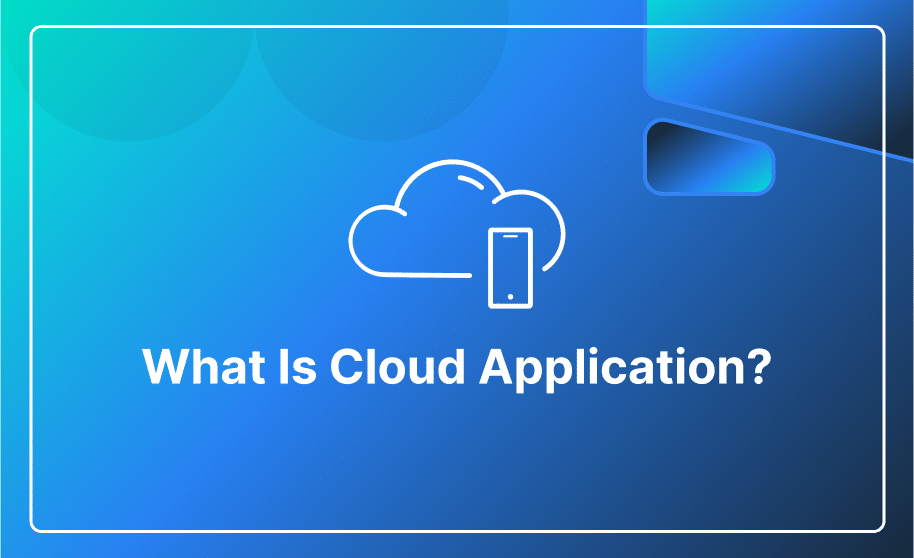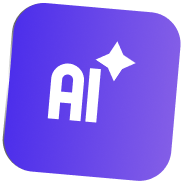Artificial Intelligence (AI) is revolutionizing the business landscape. AI software can automate your business processes, enhance decision-making, and expedite achieving your business goals.
According to Statista, the AI software market is expected to grow to $2 trillion by 2030. Software, such as chatbots, image-generating AI, and mobile applications, are the primary applications of AI in the industry that will improve the financial status of the sector in the future.
If you are a business looking to know how to develop an AI software, this blog is your comprehensive guide.
How To Build an AI: 7 Key Steps
Creating AI software involves a complex process that demands expertise in programming data analysis, and machine learning. Here are the steps involved in creating AI software:
Step 1: Identify the Problem
The first step in creating AI software is to figure out the specific problem you want to solve. It is more than just having an idea; it is about understanding the nuances of the problem and how AI can solve it.
This step is important as it determines the type of AI technology that fits your project best: an advanced Machine Learning Algorithm, Natural Language processes, or cutting vision.
Step 2: Gather Data
The next step in building AI software is to collect data.
AI systems depend on data to learn and make decisions. The data used must be relevant, accurate, and error-free.
The data is usually divided into two categories:
1. Structured
2. Unstructured
Structured Data: It is well-organized and easy to search. For instance, a spreadsheet with columns for names, addresses, and phone numbers is structured data. It is clear, defined, and simple to use in AI models.
Unstructured Data: It is more complicated and less accessible. A transcript from a customer service call is an example of an unstructured data. While it contains valuable information, however, it is not organized in a predefined way. It includes natural language, different sentence structures, and idiomatic expressions, which makes it difficult to interpret and use directly in AI models.
Most of the data you deal with in AI projects is unstructured data. It often needs thorough preparation, known as data cleaning.
Step 3: Clean and Prepare the Data for Model Training
The data-cleaning process involves:
· Organizing the data
· Removing incomplete entries
· Classifying it to prepare for AI training
Once the data is cleaned. it should be uploaded. But there is an important thing: whenever you add new data or change existing data, you will need to retrain the AI model. This process of training and retaining is important in AI development. And yes, it can be time-consuming.
Step 4: Choose An AI Technology
After having the data, it is important to choose the AI technology that aligns with your requirements. There are various AI technologies to choose from, including machine learning, speech recognition, natural language processing, augmented reality, and more.
Step 5: Train The Model
Once you have chosen the AI technology, the next step is to build and train the model using the gathered data. It is a complicated process that requires AI and Data Science expertise.
You can create your own AI model without writing any code, and there are a few simple ways to do this. One of them is to use a no-code AI Platform. You just have to provide your data, and the platform handles the training of the AI model.
Some recommended no-code AI platforms to build your own AI are:
· Google Cloud AutoML
· Amazon SageMaker
· Microsoft Azure Machine Learning
Step 6: Test The Model
Once the model is trained and built, it has to be checked to verify its accuracy and reliability. It involves testing the model on new data to see its performance.
Step 7: Deploy The Model
Once the AI model has been tested and verified, it can be deployed into the production environment. It includes integrating it into the existing systems and processes.
AI Challenges in Software Development
No doubt, AI has revolutionized software development. But there are rules and challenges to get through. Here are some of the most common challenges in AI software development:
Understand Code:
AI is not skilled at coding. While it can generate code, it may not fully understand the underlying processes. This can result in bugs and security concerns.
Ethical and Legal Matters:
If you choose to integrate AI into your banking, healthcare app, or any product that handles users’ personal information – you enter the ethical and legal landscape. When deploying AI systems, it is important to address issues such as privacy, bias, transparency, accountability, and their potential impact on society.
Data Compliance Challenges:
Be prepared to handle issues regarding data quality, accessibility, governance, and security. The data you use should be of high quality and follow compliance regulations relevant to your industry.
Finding the Professionals:
Finding and retaining highly skilled AI professionals is a big challenge. With the high demand for AI expertise, it can be difficult for businesses to find professionals who can deal with AI technology.
Next-Level AI Products: 3 Unique Ideas
Before the question “How to create an AI software” there is always the question “What AI software to build?” I understand that brainstorming app ideas can be challenging. So, if you want to build an AI-powered startup but don’t know where to begin, here are some innovative ideas to inspire your own project:
AI-Powered Nutrition App: Nutrition is highly personal, and AI can make it more personalized. This app can collect information about your health, lifestyle, and preferences and then suggest a meal plan customized to your nutritional requirements.
AI-Driven Financial Planning and Investment App: The Fintech niche holds great potential. By using machine learning, you can get personalized investment advice within the app.
AI-Powered Event Planning App: Organizing events can be overwhelming, but AI can make it easier. This app can recommend venues, caterers, and vendors according to your preferences and budget. It can also assist in creating a timeline, sending invitations, and handling RSVPs.
Conclusion:
Creating AI software can be challenging and demanding, yet with the right approach and expertise, it can yield transformative results. Whether you are looking to build an AI-powered startup or integrate AI into an existing product, Hashlogics is available to assist.
Contact us today to find out more about our AI software development services and how we can help turn your ideas into reality. Always remember, creating AI software is all about knowing how to do it right!














